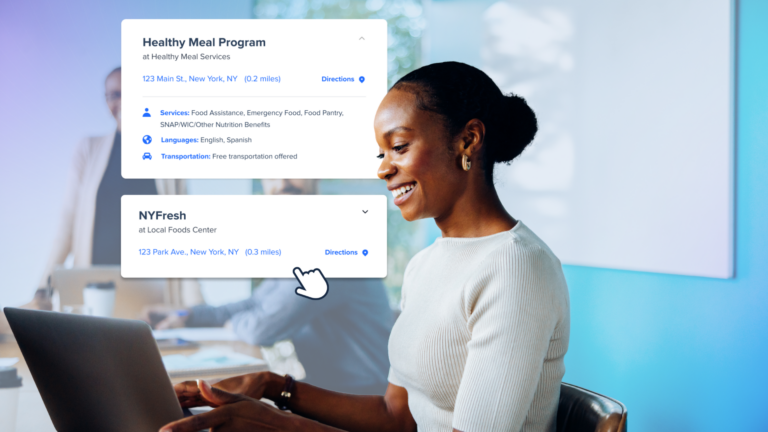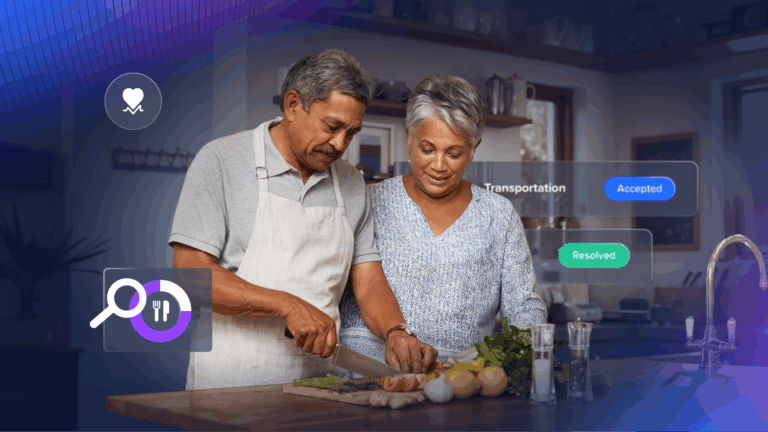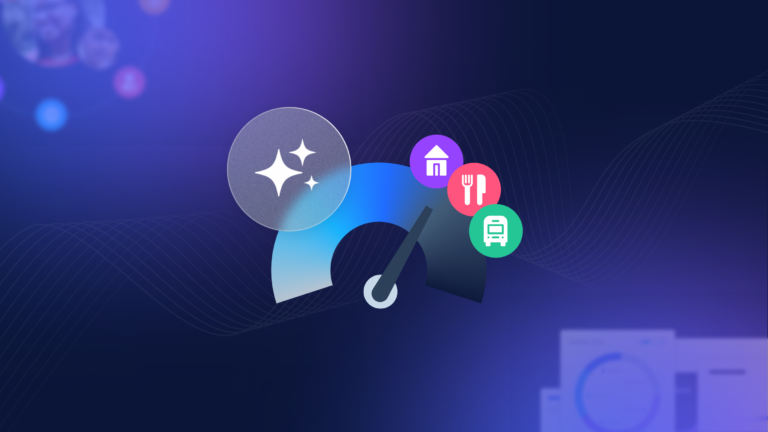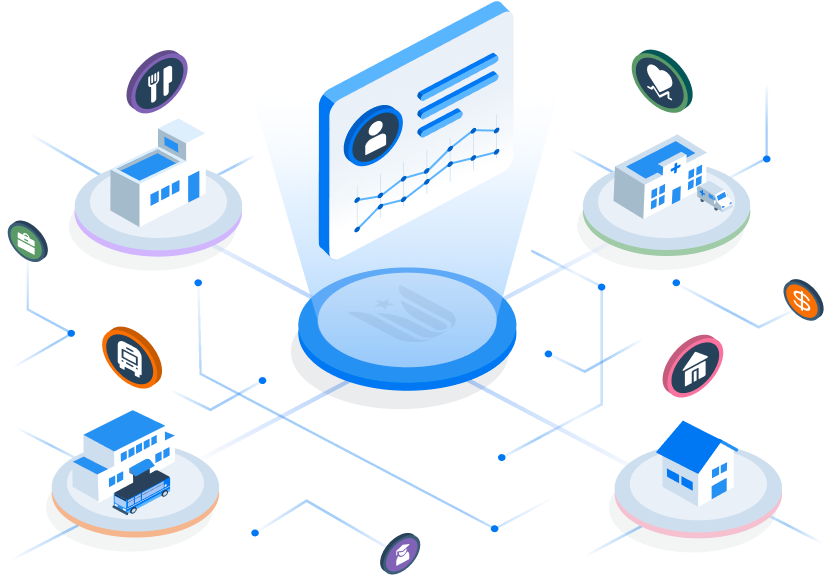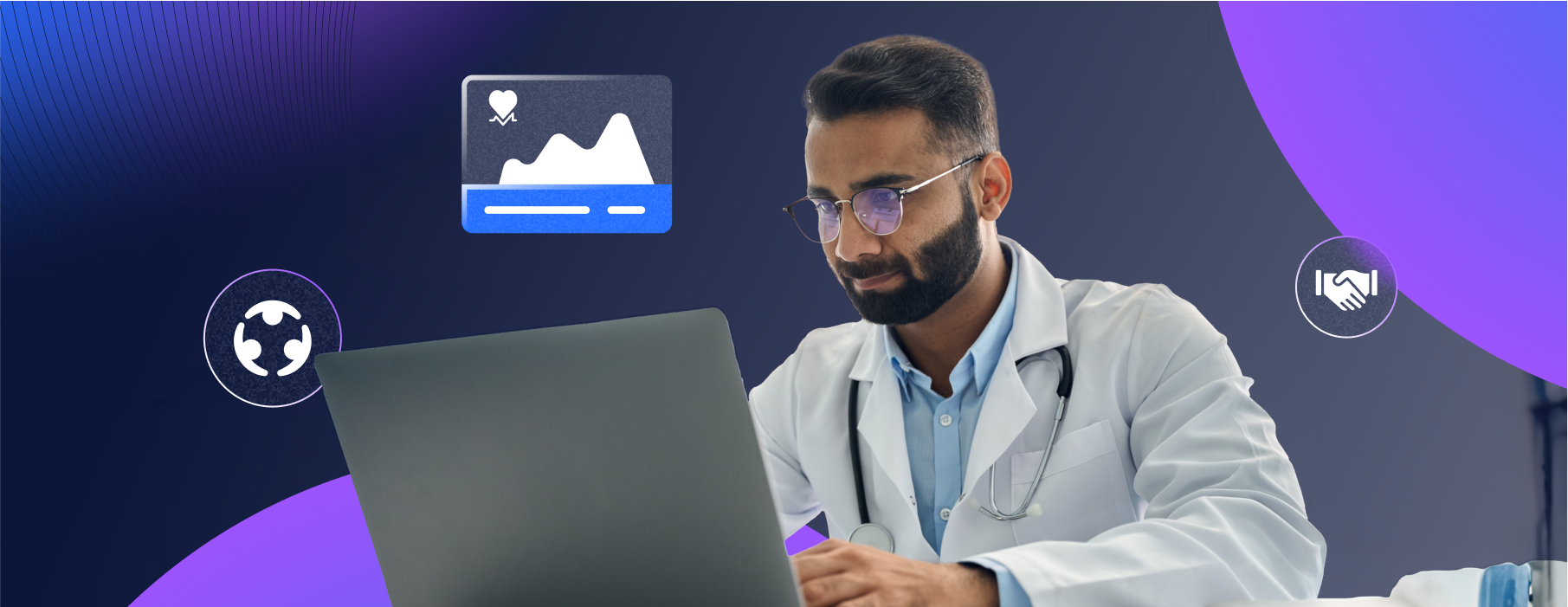
FHIR Starter: Ignite Interoperability and Improve Patient Outcomes with FHIR Integration
Fast Healthcare Interoperability Resources (FHIR) is equipping providers with a common language to identify and address non-clinical needs that impact health outcomes. In this report, we explore how FHIR enables providers to better coordinate care, reduce administrative burdens, and incorporate drivers of health (DOH) into clinical workflows. Discover how FHIR can help future-proof your organization while driving better outcomes for patients and communities.
Introduction
Effective data sharing is critical for bridging the gaps between healthcare and community-based care. But historically, siloed systems and disconnected workflows have made it difficult to communicate back-and-forth, track patient needs, and deliver impactful outcomes across the continuum of care.
That’s where FHIR comes in.
FHIR (Fast Healthcare Interoperability Resources) is a modern healthcare data exchange standard maintained by HL7 (Health Level Seven International, a standards-developing organization) that enables healthcare systems, community-based organizations (CBOs), and technology platforms to seamlessly and securely exchange patient data. This work standardizes the exchange of granular patient data and makes it easier for different systems to communicate. Providers can choose which data to surface at the point of care–resulting in more seamless workflows, less burden on staff, and more successful connections to resources.
What Is FHIR and How Does It Work?
FHIR is a set of rules and standards to facilitate the exchange of health data between different systems. FHIR can be compared to a “universal language” that enable different systems to share securely share information.
Built on widely used technology standards like RESTful APIs, FHIR breaks down complex pieces of health data into modular “resources”—such as patient, referral, or screening resources. Systems like Electronic Health Records (EHRs) or care coordination platforms can then use FHIR APIs to send, receive, or update these resources in a standardized, precise, and interoperable way.
How does FHIR work?
- Standardized structure: Because all FHIR resources use standardized definitions, systems can exchange data in a pre-defined and understood way.
- API-based: FHIR enables real-time data exchange via secure APIs.
- Customizable workflows: Organizations can decide what data to share and how to act on it—for instance, creating a referral or sending structured outcomes to the EHR.
FHIR in Action to Address Non-Medical Needs
To truly achieve whole-person care and make strides in reducing healthcare costs while improving outcomes, we must advance and simplify the comprehensive exchange of patient data. FHIR, initially designed for clinical data, is increasingly being used for sharing screening data such as housing, food insecurity, and transportation needs. These non-clinical factors have a direct and proven impact on health outcomes and healthcare costs, but until recently, a standardized method for data exchange between healthcare systems and community-based systems didn’t exist.
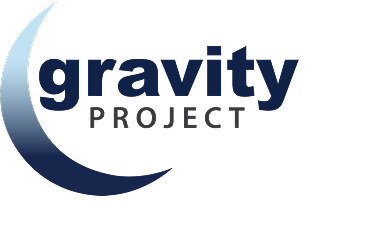 That’s where initiatives like the Gravity Project, a collaborative public-private initiative, come in. The Gravity Project is leading the national effort to develop FHIR-based data standards to represent social needs. This includes common data elements like:
That’s where initiatives like the Gravity Project, a collaborative public-private initiative, come in. The Gravity Project is leading the national effort to develop FHIR-based data standards to represent social needs. This includes common data elements like:
- Screenings — Did the patient screen positive for a social need?
- Referrals — Was the patient referred to a community-based organization?
- Outcomes — Did the patient receive the service, and what was the result?
By establishing clear, consistent definitions and implementation guidelines for this data, the Gravity Project is enabling this information to be meaningfully shared and understood across systems—without ambiguity. The expansion of FHIR standards also enables a new level of interoperability between healthcare systems and platforms that streamline care coordination, like Unite Us. With FHIR, organizations can:
- Send and receive screening, resource, and referral data in standardized formats. That data can be embedded directly into EHRs and used to alleviate the burden on staff by triggering workflows, such as an automated resource list based on screening results to connect patients to the right community resources to meet their unique needs.
- Customize what data is exchanged and how it’s acted upon—whether that’s triggering a resource list, sending a closed-loop referral, or facilitating billing workflows for services that can be reimbursed, like screenings.

Of the many ways healthcare organizations are adopting FHIR today, two primary ways focused on integrating community care coordination are:
- SMART on FHIR apps provide a curated experience embedded within the EHR. For example, a clinician can launch Unite Us directly from a patient’s chart to search for community resources or send a referral—all without leaving their EHR.
- FHIR APIs offer a more flexible, customizable option for integrating with existing systems. Organizations can design tailored solutions to meet their specific operational needs while aligning with national data standards.
Real-World Impact: Standardization and Optimization in New York
In New York, Unite Us collaborated with the Gravity Project and Qualified Entities (QEs) to implement a FHIR-based implementation guide (IG) for non-medical drivers of health referrals. Before this work, terms like “referral” or “screening” were often interpreted differently across systems, making consistent data exchange difficult.
Together, the partnership helped define clear, easy-to-follow standards for how these concepts should be captured and exchanged—enabling better tracking, improved interoperability, and even the ability to bill for screenings by aligning with structured, standards-based data. This level of standardization means that in the future, organizations will have the flexibility to choose what kind of data they want to exchange—from high-level indicators (e.g., whether a service was received) to more detailed records (e.g., which service was delivered, by whom, when, and with what result).
At its core, the goal is simple: organizations should be able to send data seamlessly to another system, and that system should be able to interpret and act on it accurately, consistently, and meaningfully—every time. When addressing non-medical drivers of health, these standards and capabilities directly impact people’s lives. By ‘speaking the same language’ and using standardized tools, we improve our ability to connect individuals with the critical resources they need.
Key Benefits of FHIR

Implementing FHIR can open the possibility of a wide range of benefits:
- Solution Flexibility: Organizations can tailor data exchange and workflows to fit their specific needs. This allows clinical practices to iterate over time, surfacing the right data to improve decision-making at the point of care.
- Staff Efficiency: Manual tasks like scanning documents or re-entering data into spreadsheets can be minimized. Automating these processes saves time, improves operational efficiency, and allows staff to focus more on direct patient care.
- Improved Care Coordination: Care teams can connect patients to trusted community resources, track their total care journey, and improve health outcomes at scale.
- Streamlined Reimbursement: With standardized data, organizations can better track non-medical screenings and interventions, making it easier to bill for these essential services and demonstrate value to payers.
- Future-Proof Operations: By adopting FHIR, organizations can strongly position themselves to meet new healthcare requirements around interoperability and easily integrate emerging technologies as the healthcare landscape evolves.
Common Challenges and Considerations
While FHIR is a powerful tool, its implementation can come with some challenges:
- Standard Maturity: Data standards continue to evolve. This means organizations may need to navigate changing or expanding definitions as the field grows.
- Adoption Variability: Not every EHR system or network is fully FHIR-enabled yet. As we move toward connecting care across industries—not just within healthcare—that variability becomes even more noticeable. However, because FHIR is built on modern RESTful APIs, it can still be applied more broadly and help bridge gaps between different systems and industries.
- Upfront Investment: Getting FHIR up and running takes time, dedicated staff, resources, and prioritization across the health system. But investing early can pay off in the long run with improved efficiency and better care outcomes.
Although FHIR was originally designed for healthcare, its use of common technology standards makes it flexible enough to extend beyond traditional clinical settings. This helps close the gap between healthcare providers and community-based organizations, enabling more connected, comprehensive care.
The Road Ahead: Standardization and the Future of FHIR Integration
The future of FHIR is bright; and its role in improving drivers of health outcomes is just beginning.
As data exchange standards continue to mature and adoption grows, healthcare and CBOs will gain more control over the type of data they exchange, from high-level indicators to detailed, actionable outcome data. The more that systems adopt these standards, the closer we get to true interoperability, where seamless data exchange isn’t just a possibility, but an expectation.
FHIR helps different parts of the care ecosystem work better together. For healthcare providers, it makes it easier to integrate non-clinical care into existing workflows. For CBOs, it creates a pathway to securely share data with healthcare partners and pursue reimbursement. And for patients, it enables more coordinated, connected care across clinical and community settings.

Just as important, FHIR gives organizations a shared foundation to design workflows around their unique goals. What problems are there to solve? What data is needed—and where should it live? Who should see it, and what should they be able to do with it? There’s no one-size-fits-all approach—but by standardizing data and customizing workflows, organizations can build the systems they need to support whole-person care.
As the industry continues to shift toward value-based, integrated care models, standardized data sharing will be key to achieving better outcomes at scale. By embracing FHIR, organizations can lead the way in building a more connected, responsive future for everyone they serve.
Glossary of Terms
- FHIR: Fast Healthcare Interoperability Resources
- SMART: Substitutable Medical Applications and Reusable Technologies
- HL7: Health Level Seven International
- V2 Messaging: Early HL7 standard for data exchange
- API: Application Programming Interface
- Gravity Project: National initiative to standardize DOH data
- Implementation Guide (IG): A guide for applying FHIR to specific use cases
About Unite Us
Unite Us is the nation’s leading software company bringing sectors together to improve the health and well-being of communities. We drive the collaboration to identify, deliver, and pay for services that impact whole-person health. Through Unite Us’ national network and software, community-based organizations, government agencies, and healthcare organizations are all connected to better collaborate to meet the needs of the individuals in their communities.


